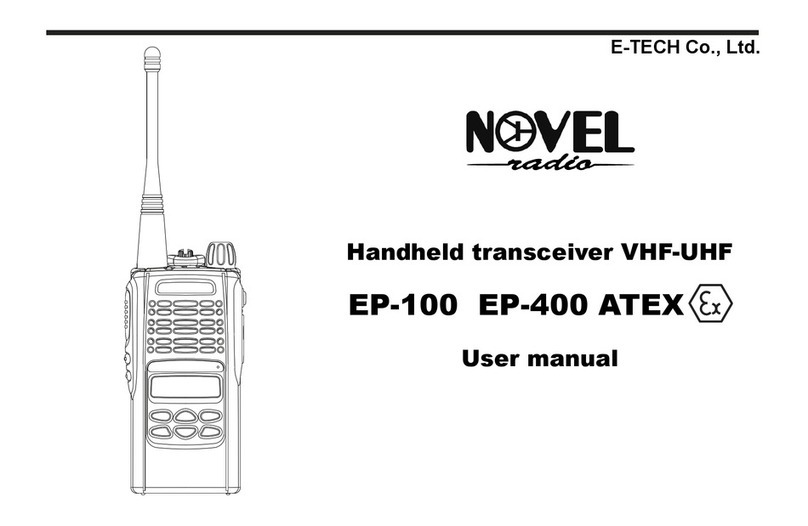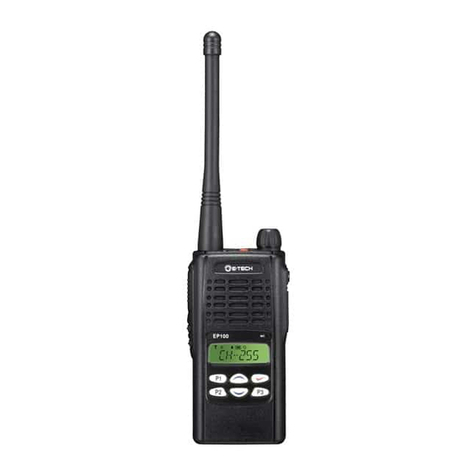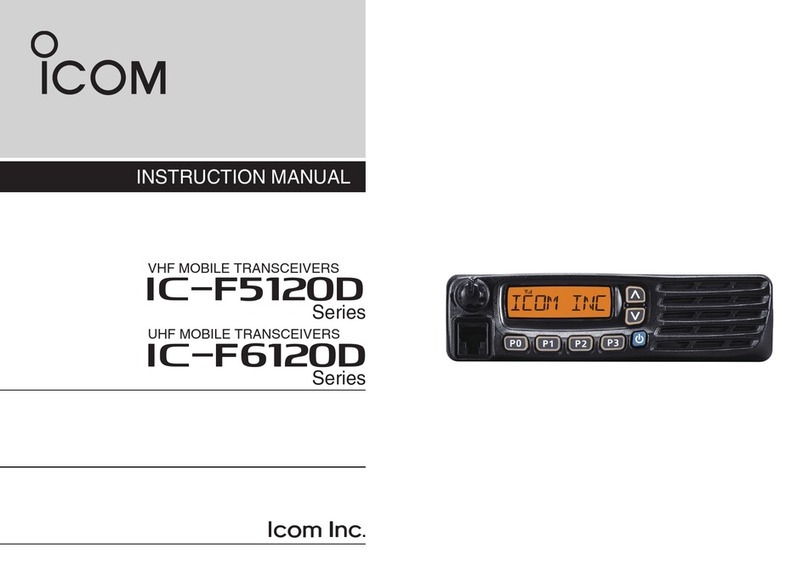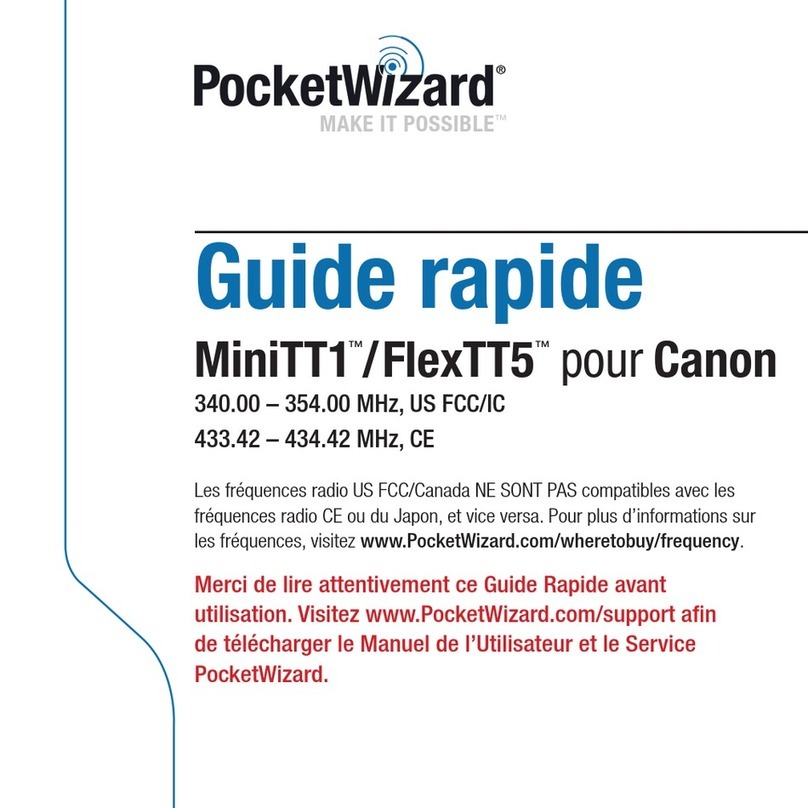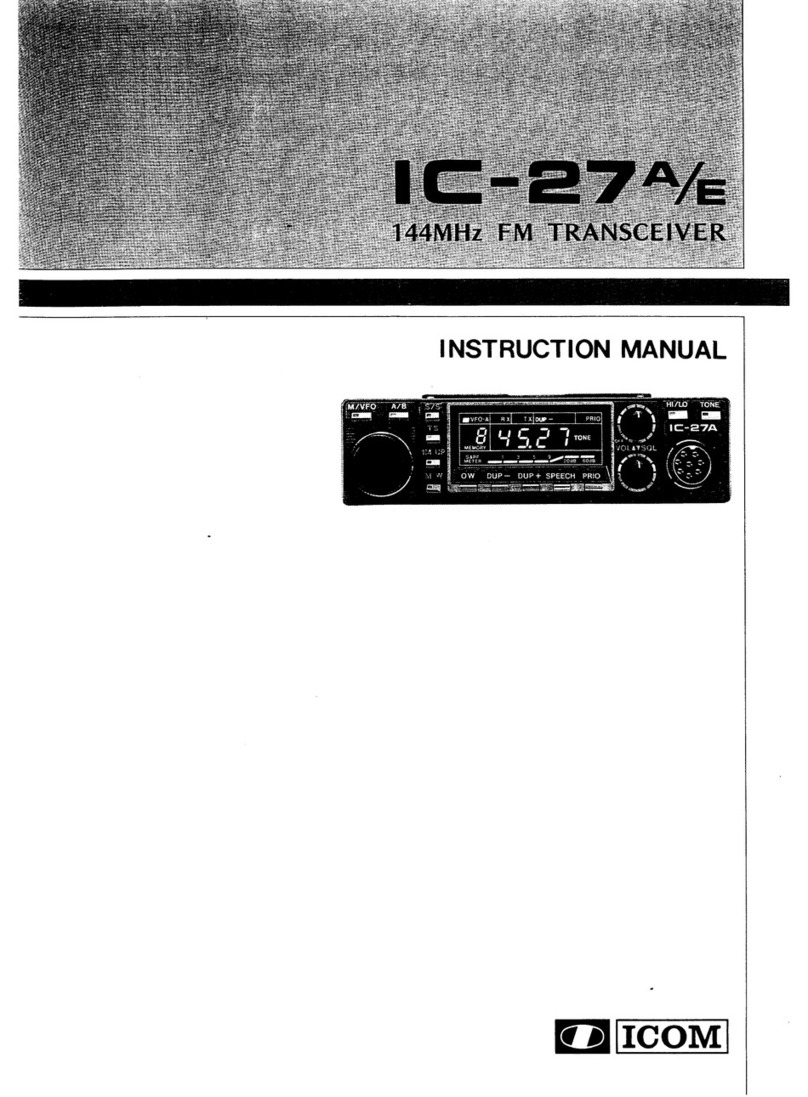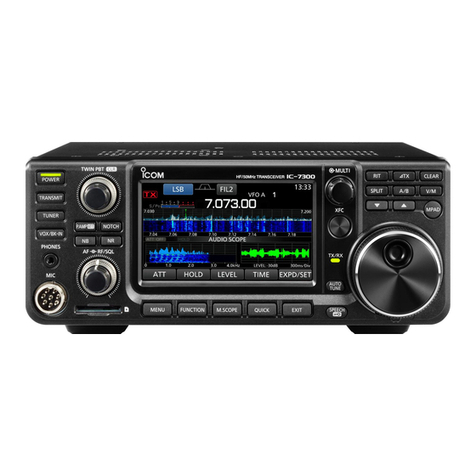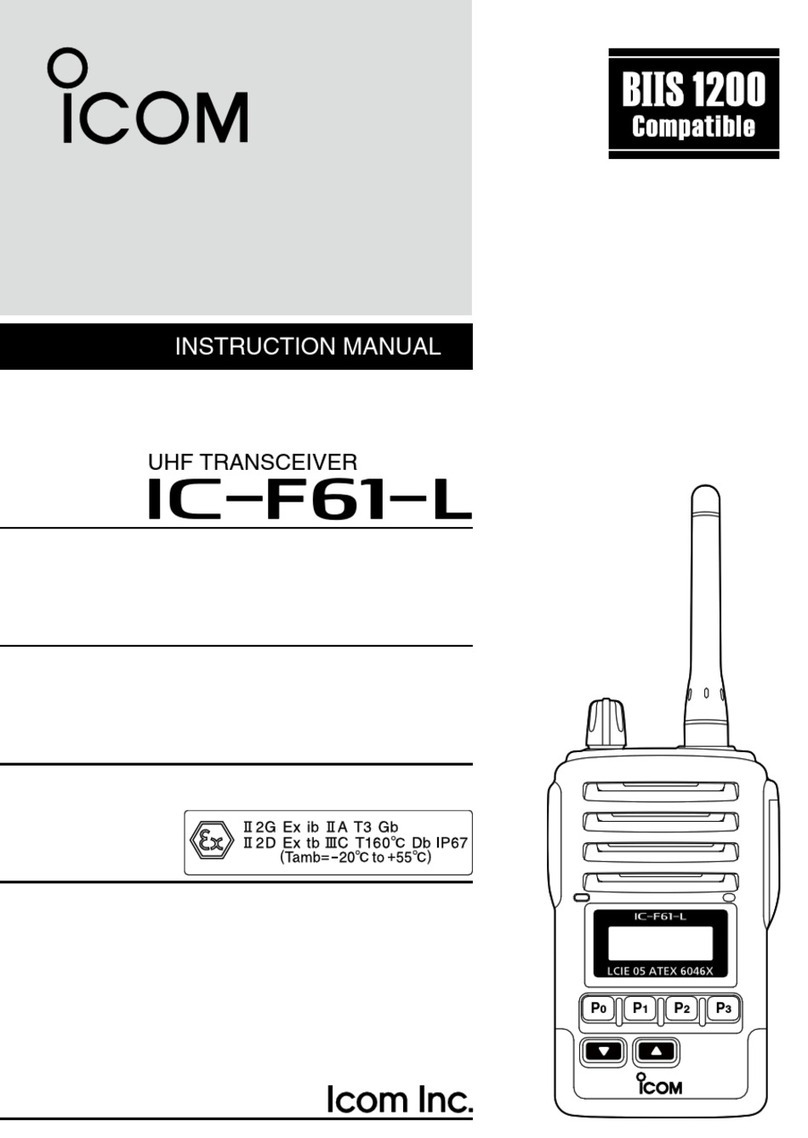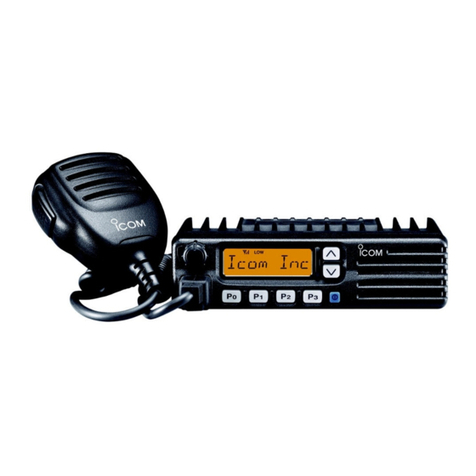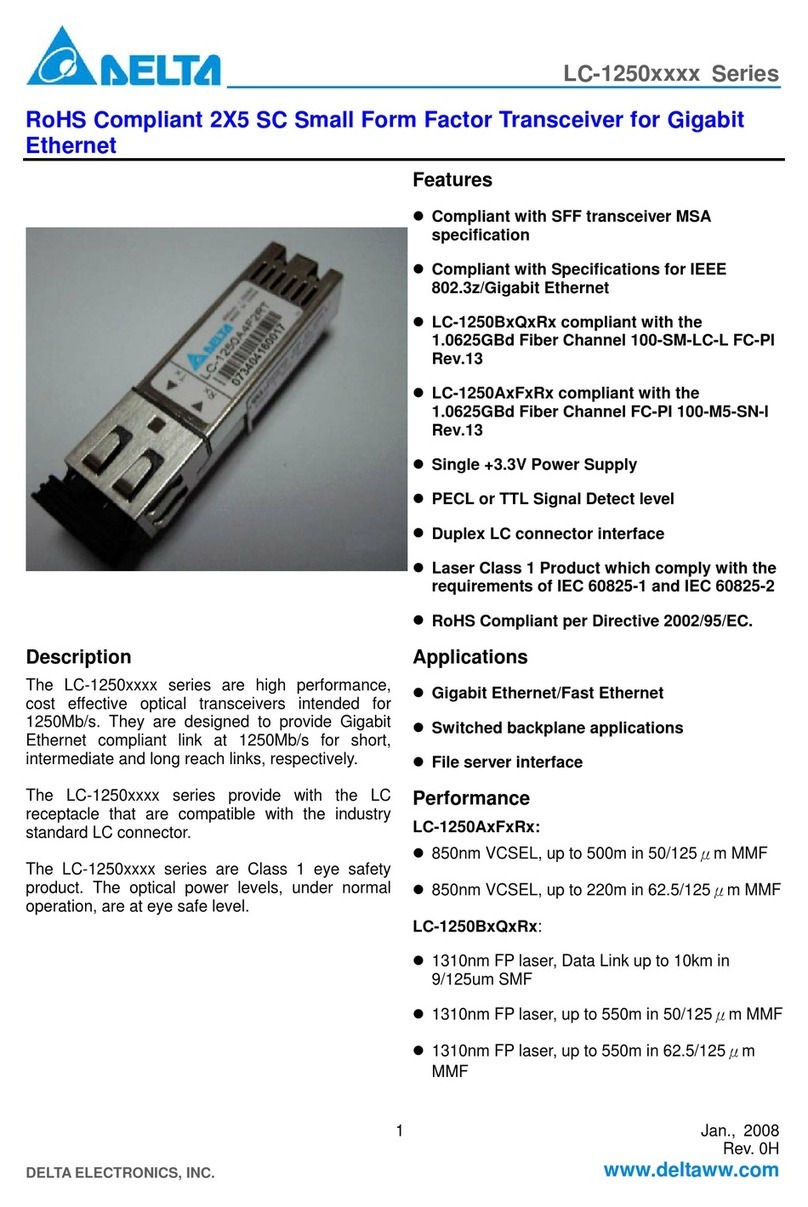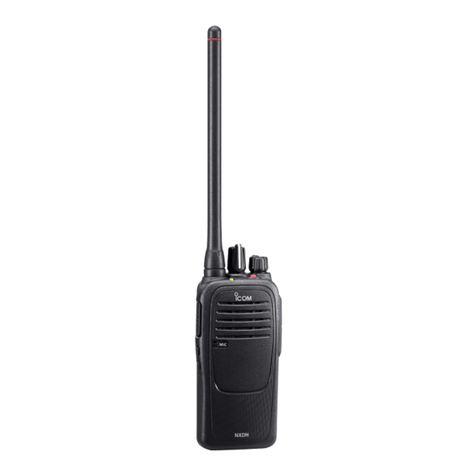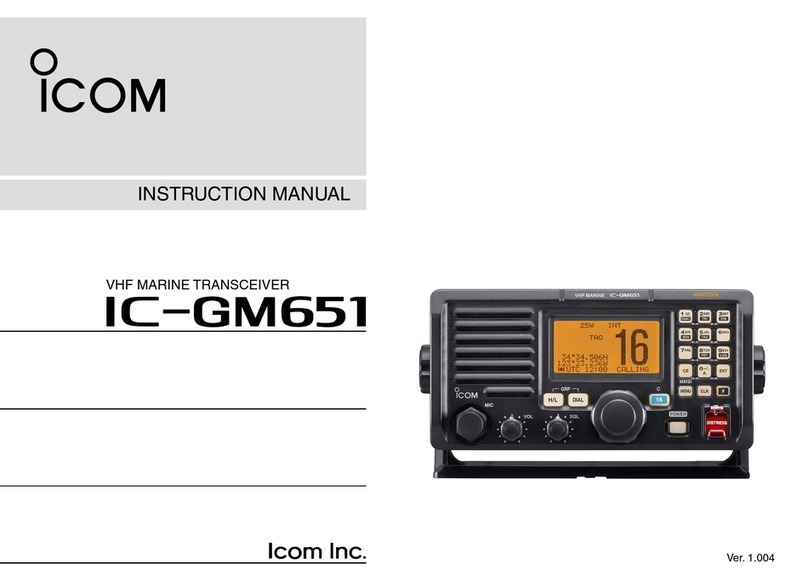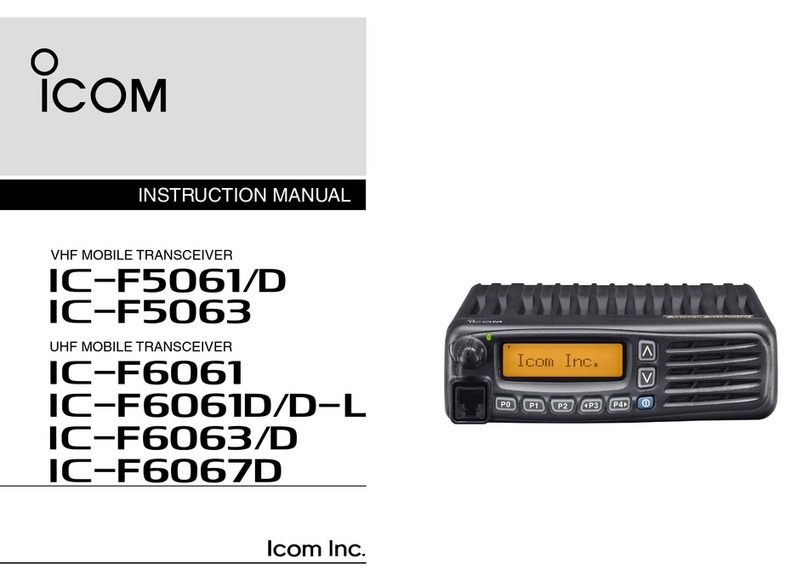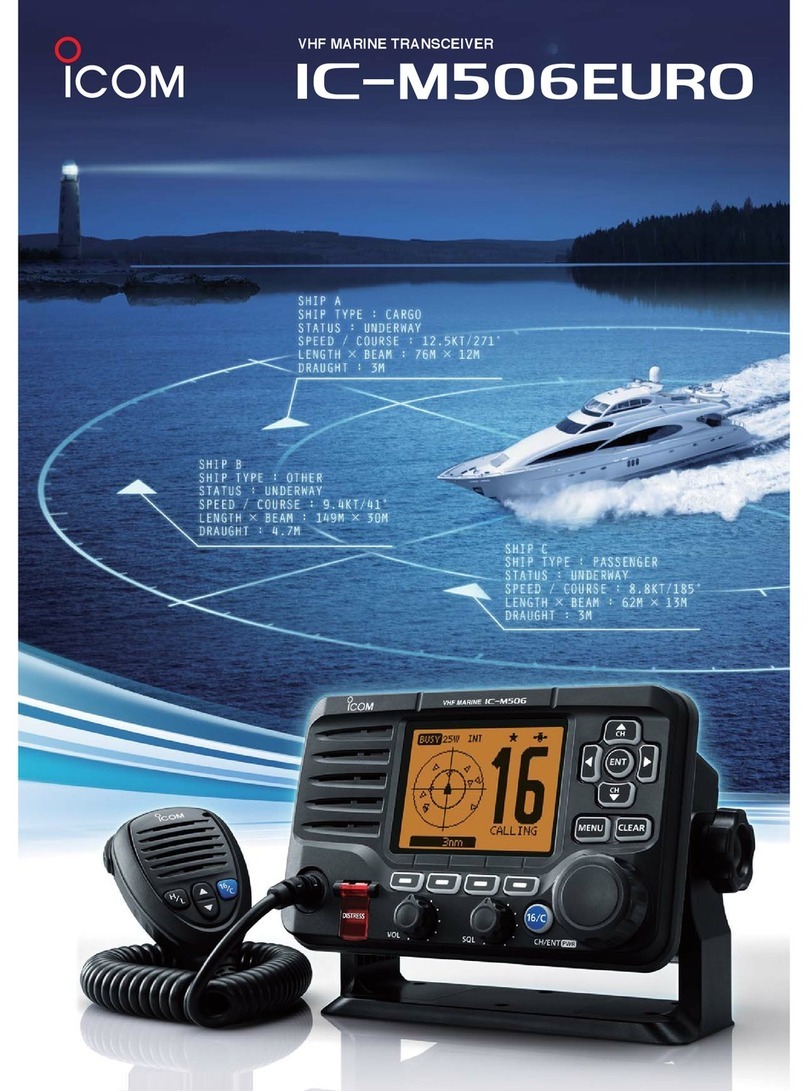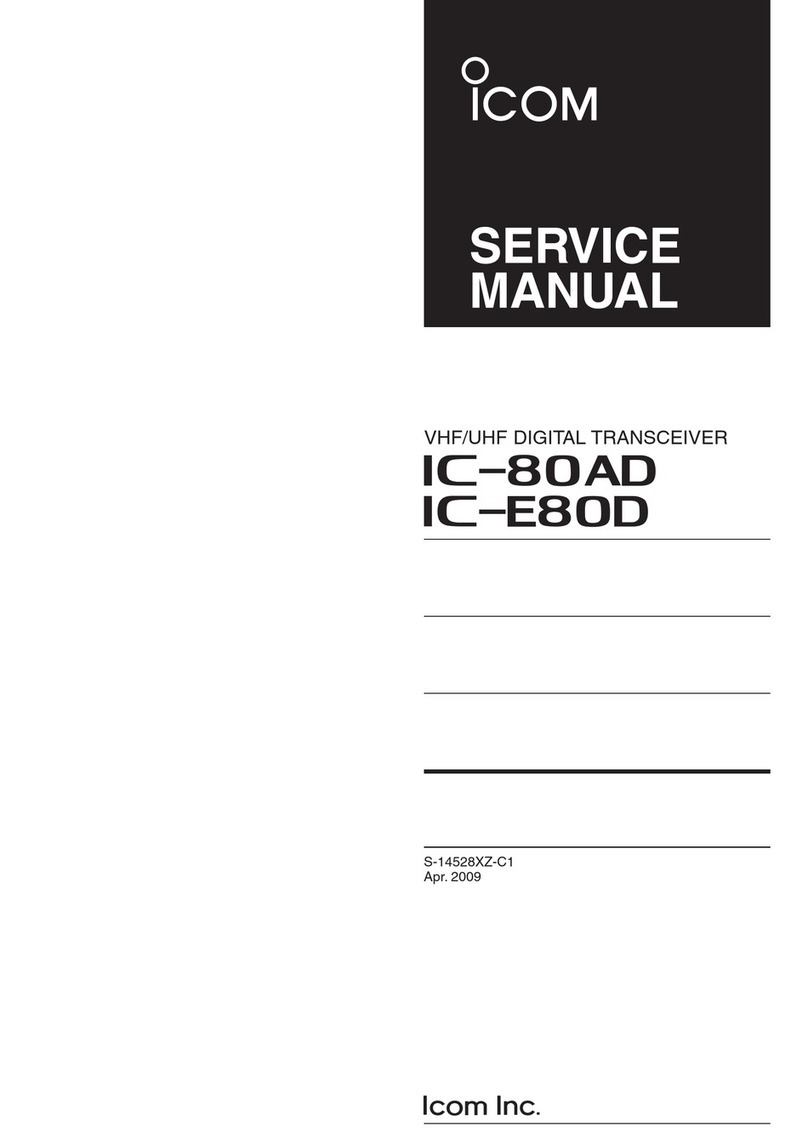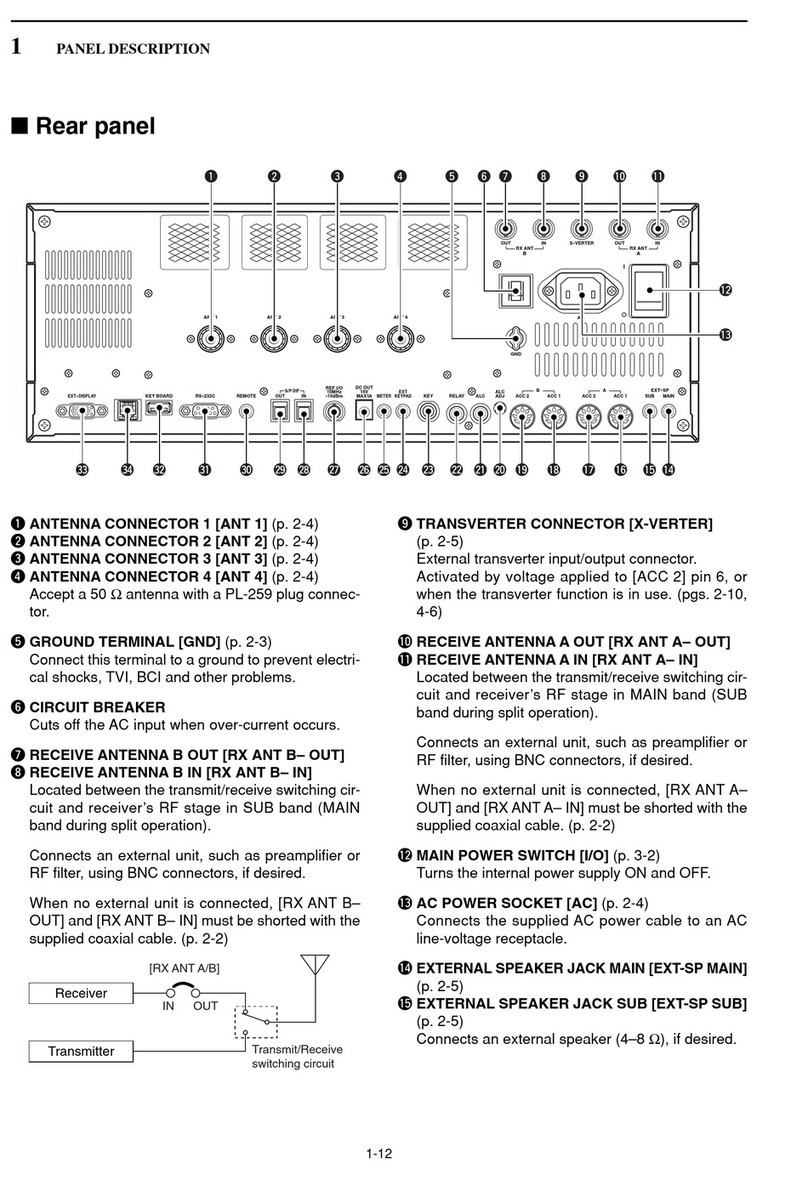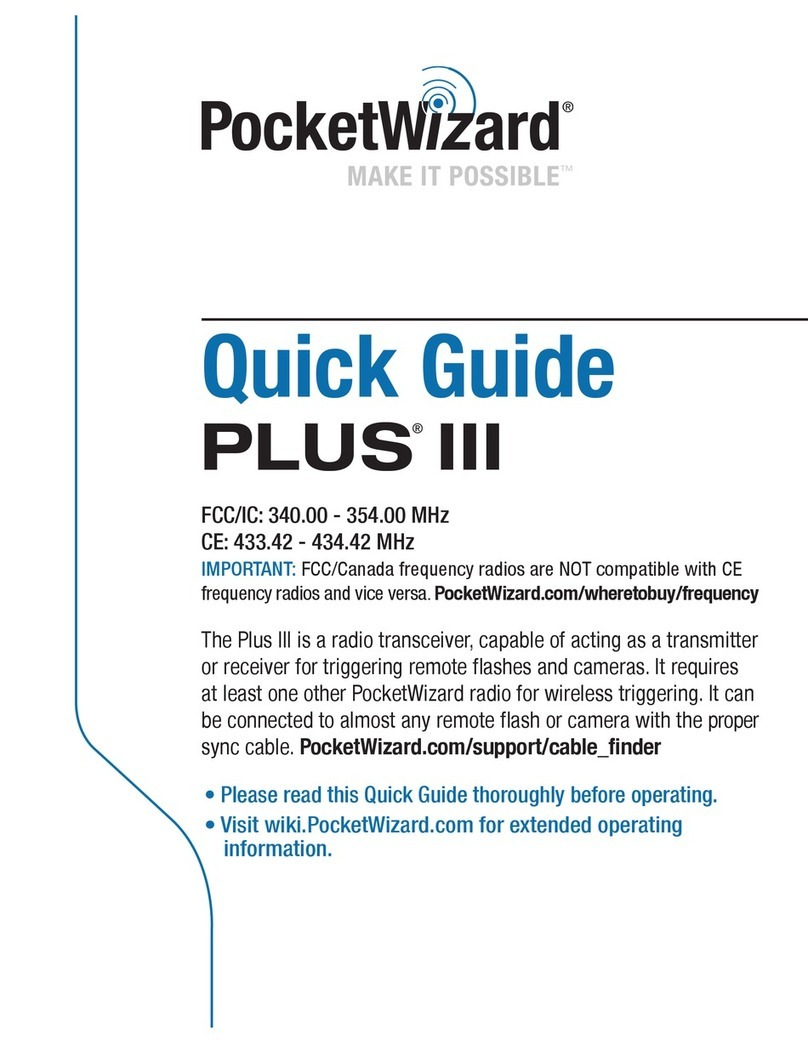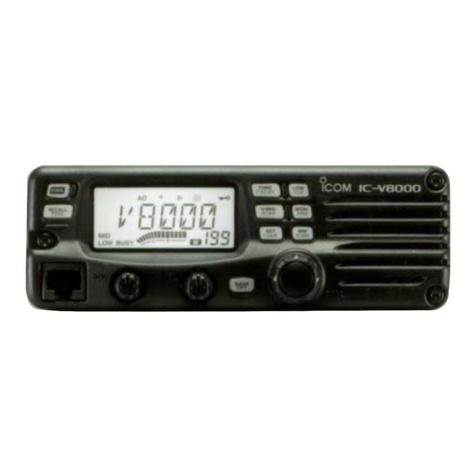E-Tech IP - Series User manual

1
Professional Radio
IP - Series
User Guide

2
ITEMS

3
CONTENTS
RadioOverview 4
Programmable Buttons 4
PanelDescription 5
Radio Controls 5
MenuKeys 6
Menu Navigation Chart 7
LCDDisplayIcons 8
Accessories 9
Attaching the Battery 9
Removing the Battery 9
Attaching the Antenna 10
Removing the Antenna 10
Operation 11
Turning the Radio On-Off 11
Adjusting the Radio’s Volume 11
Selecting a Radio Channel 12
Missed Calls 13
ContactList 14
LoneWorker 15
Txpower 16
Status Calls 17
Group 18
BeepOn/Off 19
TxTone 20
RxTone 21
DTMF 22
Talkaround 23
Keylock 24
Scan 25
Scrambler 26
Approval 27

4
RADIO OVERVIEW
Thank you for purchasing the IP-Series transceivers.
Read all instructions carefully and completely before using transceiver.
This instruction manual contains important operating instructions for the
transceivers.
OPERATION AND CONTROL FUNCTIONS
Radio Controls
The numbers below refer to the illustrations on the inside front cover.
1. On-Off / Volume Knob
Turn the power/volume control knob clockwise to trun the radio on.
2. Push to Talk Button (PTT)
Push and hold to transmit; release to receive signal
3. Monitor button
Press the Monitor key momentarily to disable the Tone squelch.
4. Emergency button
The emergency function allows you to send an emergency signal
quickly and easily to your Base Station, etc. in case of emergency.
5. LED Indicator
6. Microphone
7. LCD Display
8. Menu Keys
9 . Antenna
10. Accessory Connector
Connects headsets, remote speaker/microphones and other
accessories. Replace attached dust cap when not in use.
11. Belt clip
Programmable Buttons
All of your radio buttons can be programmed (By Programming
Software ) to activate the radio features.

5
Feature Description
Monitor/Cancel _______
The monitor function allows you to open the transceiver's
squelch manually to check whether a channel is busy or not.
Radio Call ___________
To make an individual or group selective call.
Missed Call List _____
Allows user direct access into the Missed Call List menu feature.
Status call __________
Allows user direct access into Status List menu.
Talkaround On/Off ___
The talk around function changes duplex channels to simplex channels.
DTMF _______________
This function allows you to send a pre-programmed DTMF code
to control a repeater, open another transceiver's squelch
Scan On/Off _________
The scan function allows you to search a pre-programmed group
of channels for signals.
Scrambler function ___
This function provides higher communication security
Emergency __________
This function allows you to send an emergency signal quickly and easily.
Lone Worker ________
To identify user as alone worker. Radio enters emergency
sequence unless user responds, when prompted, by pressing any
radio button.

6
Menu Keys
P1 Up Menu/ Select
P2 Down P3
Menu/ Select key
This key is used to choose Menu selection.
Displays veriety of information such as, Missed call list, Contact list,
Status call list, Lone worker Talk around, Password etc.
P1
Toggle between high and low power.
P2
Start scanning programmed channels.
Up Key
Select the desired channel or Scroll Menu function
Down Key
Select the desired channel or Scroll Menu function
P3
Sets the point at which random noise on the
channel does not activate the audio circuits but a received signal does.
This point is called the squelch threshold.
Further adjustment of the squelch control will degree the reception of
wanted transmissions.

7
Menu Navigation Chart

8
LCD Display and Icons
Symbol Name and Description
Indicate relative signal strength level.
Power Level Indicator.
"H" is high power. "L" is low power.
Key Lock Indicator.
Appears during key lock function ON.
Alert(Beep) ON/OFF Indicator.
Appears when beep sound is turned ON.
Battery Level Indicator.
Indicates remaining battery power.
VOX Indicator.
Appears when VOX function is turned ON.
Scan Indicator.
Appears when Scan function is activated.
Scrambler Indicator.
Appears while the voice scrambler function is
activated.
Talk Around Indicatior

9
ACCESSORY INFORMATION
Attaching the Battery
1. Fit the extensions at the bottom of the battery into the slots at the
bottom of the radio’s body.
2. Press the top part of the battery towards the radio until you hear a
click.
Removing the Battery
1. Turn off the radio, if it is turned on.
2. Slide the battery latches, on both sides of the battery, downwards.
3. Pull the top part of the battery away from the radio’s body, and
remove the battery.

10
Attaching the Antenna
1. Align the threaded end of the antenna with the
radio’s antenna connector.
2. Turn the antenna clockwise to fasten it.
Removing the Antenna
1. Turn the antenna counterclockwise until you can
remove it.

11
RADIO OPERATION
Turning the Radio On or Off
To turn the radio on, turn the On-Off/Volume Control knob clockwise.
To turn the radio off. turn the On-Off/Volume Control knob
counterclockwise until you hear a click.
Adjusting the Radio’s Volume
Turn the On-Off/Volume Control knob to adjust the volume level.

12
Selecting a Radio Channel
This radio offers up to 255 channels.
Select the desired channel by using Up/Down Key.
Each press increases/decrease the channel number.
When held down, the channels increase continuously.
Seclect the desired channel by using Down Key. Each press
decreases the channel number.
When held down, the channels decrease continuously.
Transmission signal
To transmit, monitor the channel and make sure it is clear. THIS IS
AN FCC REQUIREMENT!
To transmit, press and hold in the PTT switch.
Speak into the microphone area of the panel grill in a normal voice
level. To return to the Receive mode, release the PTT switch.

13
Missed call list
If a call remains unanswered, the call will be stored by the radio,
provided that Missed Calls has been programmed into your radio.
Up to 16 calls can be stored. If the same radio calls more than once,
only the most recent call is stored. When fifteen calls have been
stored by the radio, depending on the radio programming the
sixteenth call received may overwrite the first or not be stored by the
radio.
If the displays shows S there is a status message associated with the
call.
Method
1. to enter Menu Mode.
2. to select
3. to scroll list

14
Contact List
During a call, the contact list may be used to give access to up to 16
preprogrammed numbers accessed via the menu.
Up to 16 calls can be stored. If the same radio calls more than once,
only the most recent call is stored. When fifteen calls have been
stored by the radio, depending on the radio programming the
sixteenth call received may overwrite the first of not be stored by the
radio.
Method
1. to enter Menu Mode.
2 toscrolllist
3. to select

15
Lone Worker
The Lone Worker function enables you to work alon with more safety.
You can switch On and Off Lone Worker by using a pre-programmed
Lone Worker button or through the menu.
Method
1. to enter Menu Mode.
2. to scroll list until Lone Worker
3. to select
4. or toturnON/OFF

16
Tx Power
This function selects high or low power for a channel.
Method
1. toenterMenuMode.
2. toscrolllistuntilTxPower
3. toselect
4. or toselectHigh/Low

17
Status Call List
A status is a code for transmitting prearranged messages, e.g. status
"03" may indicate "launch".
The prearranged messages and associated code digits are contained
in a Status List which contains up to 30 entries.
Method
1. toenterMenuMode.
2. toscrolllistuntilStatus
3. toselect
Making a Status Call
Method
1. toenterMenuMode.
2. toscrolllistuntilStatus
3. toselect
4. or toselectStatuslist
5. Press the PTT button.

18
Group
Method
1. toenterMenuMode.
2. toscrolllistuntilGroup
3. toselect
4. or toscrolllist
5. toselect

19
Beep On / Off
Alert(Beep) ON/OFF Indicator Appears when beep sound is turned ON.
Method
1. toenterMenuMode.
2. toscrolllistuntilBeep.
3. toselect
4. or toturnON/OFF
5. toselect

20
Tx Tone
This function used to change Tx Tone such as CTCSS, DCS.
Method
1. toenterMenuMode.
2. toscrolllistuntilTxTone
3. toselect
4. or toselectwhetherCTCSSorDCS
5. toselect
There are 38 CTCSS code(1~38)
There are 83 DCS code(101~183)
0 means no Tone
Table of contents
Other E-Tech Transceiver manuals
